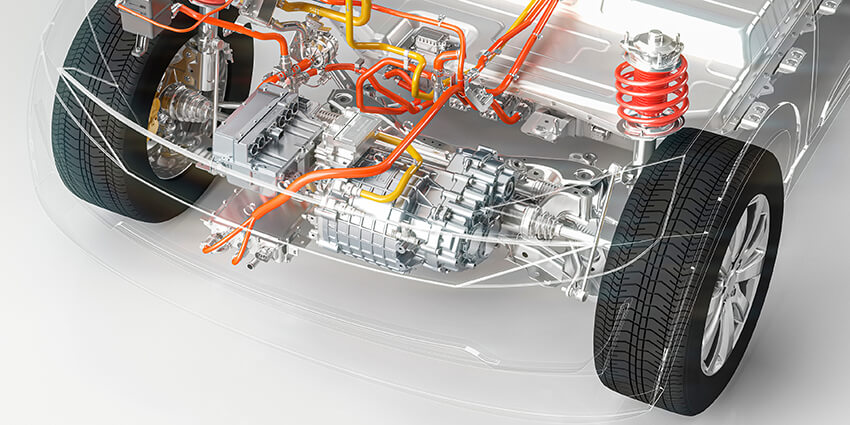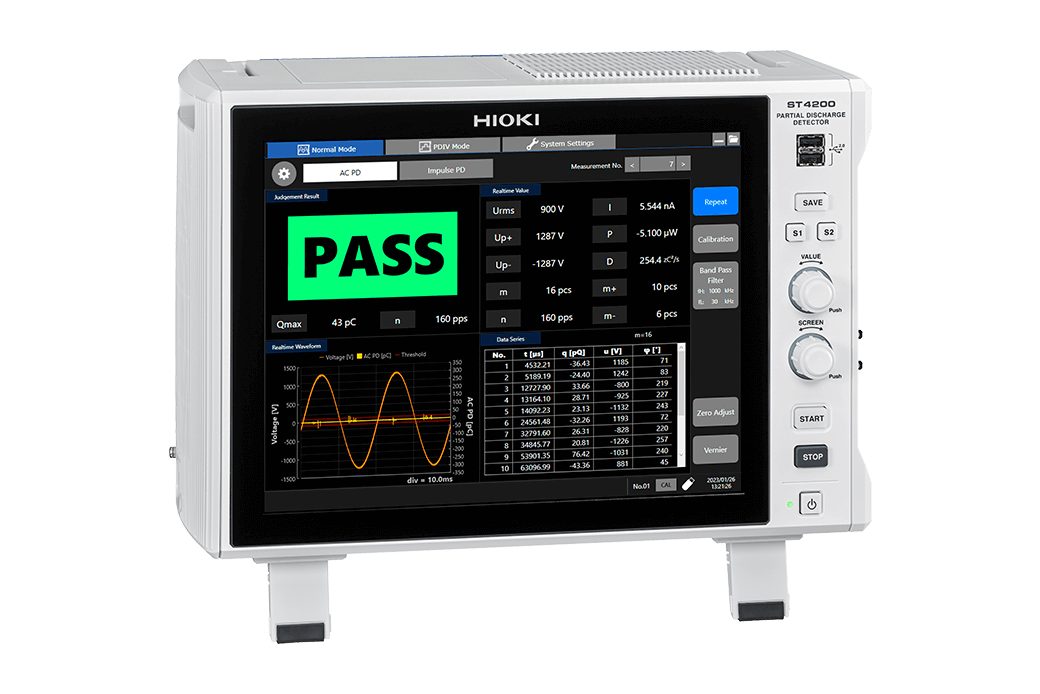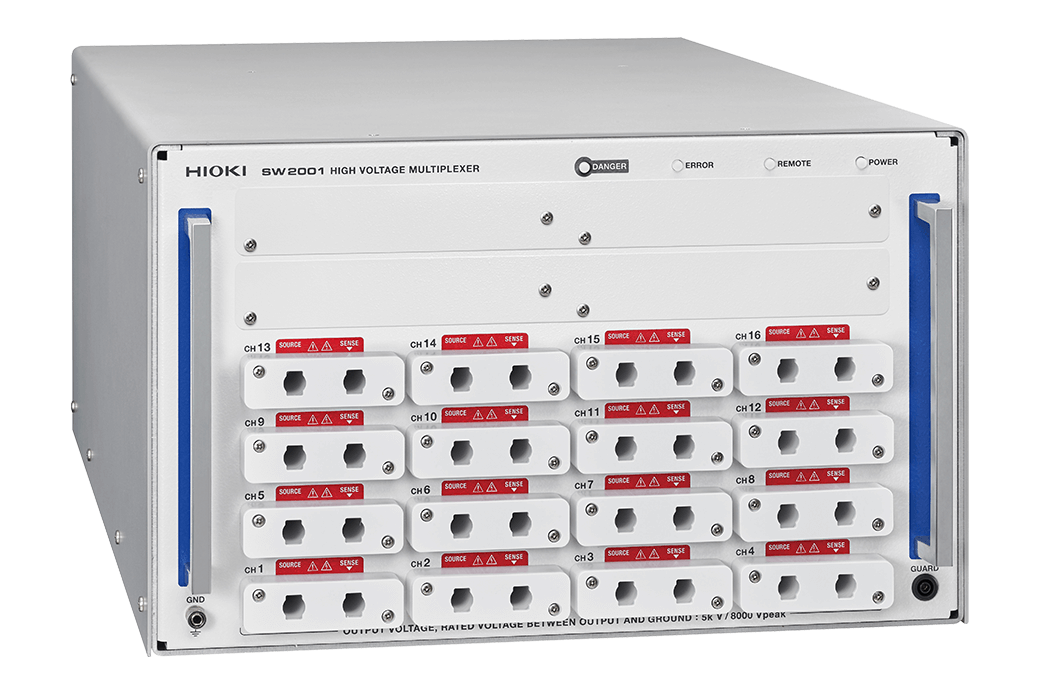Why is Partial Discharge (PD) Testing Necessary for Inverter-Driven Motors?
PD testing of inverter-driven motors
Inverter-driven motors in electric vehicles (EVs) are subjected to momentarily high voltages due to switching operation. Over time, partial discharges in windings resulting from these high voltages and insufficient insulation can cause insulation degradation. These degradations can lead to short-circuits or insulation breakdowns, and potentially serious accidents such as fire.
It is standard to check insulation performance with insulation resistance measurement during the manufacturing stage and checking for insulation defects using withstand voltage testing (hipot testing) in completed motor stators. Adding PD testing to these tests to detect latent insulation defects can further improve motor quality and safety.
To meet demand for higher-quality onboard components, testing processes carried out during the motor production are important, and test systems that can discover defects prior to shipment are essential.
Why is PD testing important for inverter-driven motors?
The inverter voltage used to drive motors consists of waveforms in which switching operation repeats at high speed. Each switching operation is accompanied by a surge voltage of approximately twice the switching voltage or greater, causing a momentary high voltage to be applied between windings inside the motor. Repeated exposure to this surge voltage accelerates the degradation of insulation.
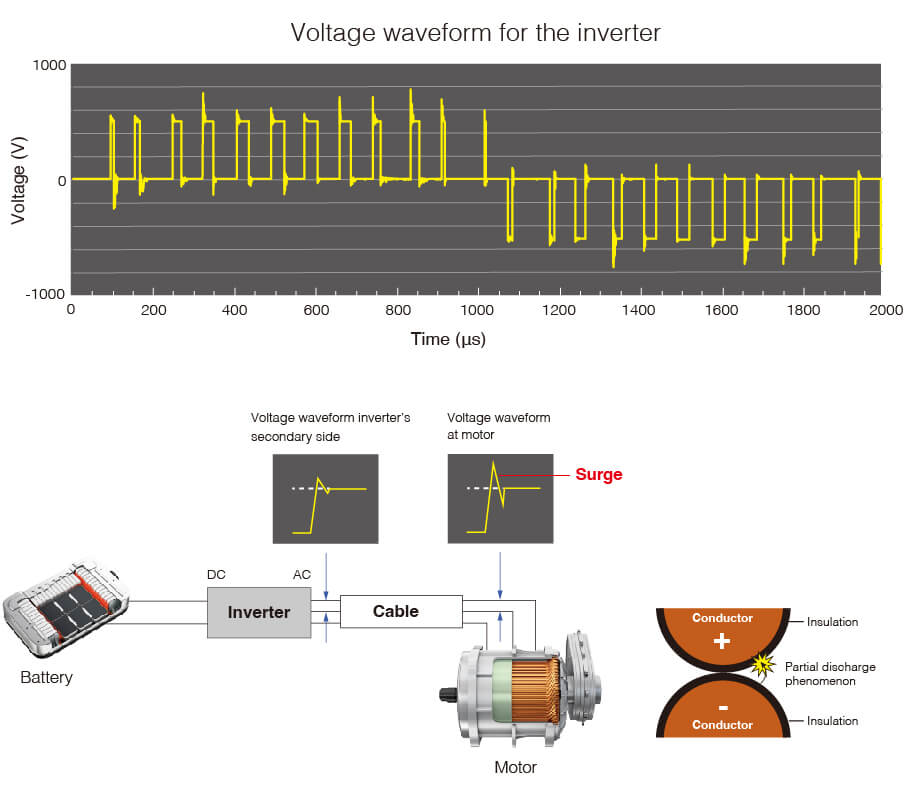
In general, partial discharges are believed to occur when a voltage more than about 350 V is applied to a poorly insulated winding. When there are locations of reduced insulation on a motor winding, partial discharges will occur, and their continued occurrence over an extended period of time will cause the insulation to degrade further. Insulation degradation resulting from these partial discharges can cause serious accidents (such as fire) due to short-circuits or insulation breakdowns.
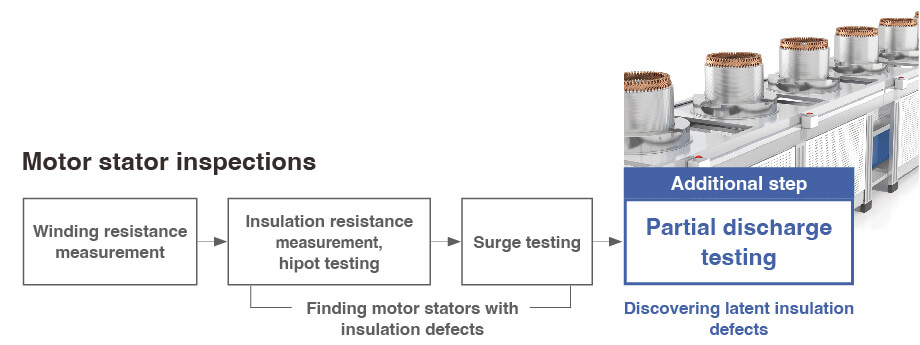
PD testing can proactively identify and mitigate the risk of partial discharges as a cause of insulation deterioration prior to shipment. Conventional insulation resistance measurement, hipot testing, and impulse testing (surge testing) cannot discover these latent defects that have not yet led to an insulation breakdown.
Technological obstacles in introducing PD testing into the production line
PD testing on production lines often suffers from poor repeatability due to the influence of noise on measurements. This is problematic with the commonly used electromagnetic wave detection method, which is highly susceptible to interference in noisy environments.
Modern motor test lines, have more complex wiring in the test system because they consolidate multiple tests at a single location. The many wires more easily pick up noise from the production environment than in conventional motor test lines. This high-noise environment is further exacerbated if multiple motors are simultaneously tested to improve production speed. As a result, the more modern and efficient the test system becomes, the higher the noise levels are, making traditional partial discharge testing impractical.
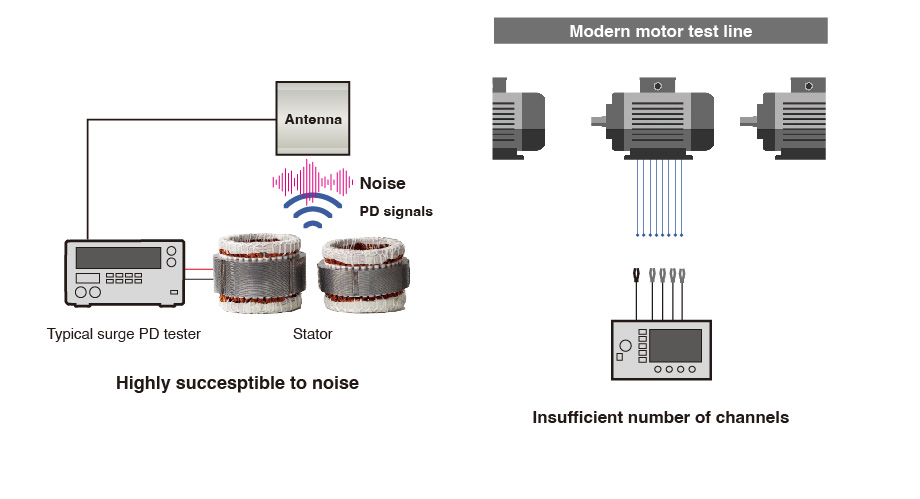
Key considerations for assuring effectiveness and reliability in testing systems of PD and other motor tests
Two distinct partial discharge (PD) testing methods, AC PD and surge PD testing, are used to detect latent defects. AC PD testing utilizes hipot testers and dedicated PD detection circuits to quantify partial discharges, often employing bandpass filters to mitigate environmental noise. Surge PD testing, conversely, assesses a motor's ability to withstand surge voltages, simulating inverter switching with surge voltages applied from surge testers. While both PD tests are detailed in IEC standards, they target different types of insulation weaknesses. Combining both AC and surge PD testing provides a more comprehensive approach to motor failure detection. For surge PD testing in noisy environments, high-frequency current transformers (CT) offer superior measurement stability compared to electromagnetic wave detection.
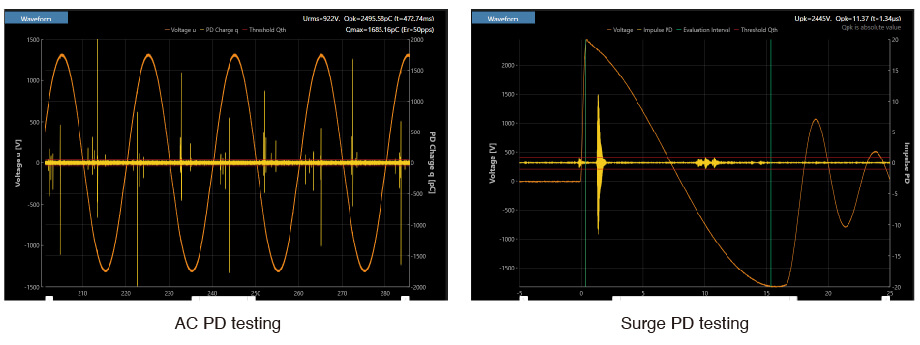
In modern motor test lines, PD tests are performed at a single location, potentially on multiple motors, in addition to other tests. Multiplexers facilitate this integration by switching between high-voltage and low-voltage measurements. However, careful consideration is crucial for safely switching between instruments and for multiplexer design. Material selection, robust hardware design, and optimized wiring are essential to minimize leakage currents and noise interference, also ensuring reliable and safe switching. Furthermore, the reliability of high-voltage relays is a key, as frequent replacements can significantly impact production efficiency. Therefore, selecting durable high-voltage relays that meet stringent insulation requirements is crucial for minimizing downtime.
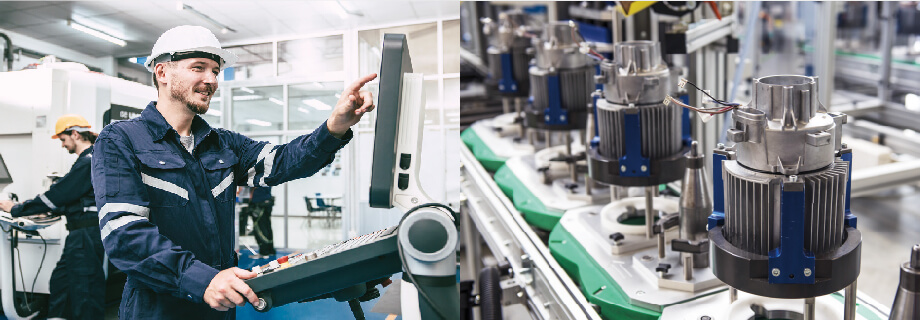
Effective partial discharge testing made possible: Hioki’s Partial Discharge Detector ST4200 and High Voltage Multiplexer SW2001
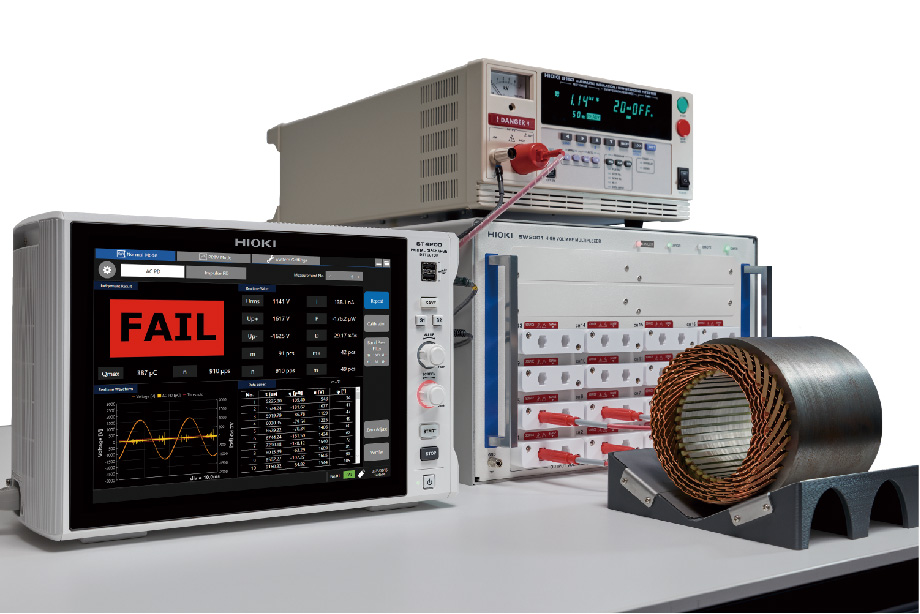
Support for a diverse range of system building
By combining the Partial Discharge Detector ST4200 with the High Voltage Multiplexer SW2001, you can build an automatic testing system that safely switches between multiple test parameters and motors. The SW2001 multiplexer incorporates built-in AC PD and surge PD detection sensors, simplifying the system-building process. The device is effective for not only stator winding measurement, but thermistor temperature sensor measurement. The two products can be used with instruments already used on typical test stations, but by standardizing with Hioki instruments, Hioki staff can provide across-the-board support for measurement and calibration. Hioki can propose the optimal configuration based on the user's desired test parameters, number of connection terminals on the motor to be tested, and number of temperature sensors.
ST4200 Partial Discharge Detector
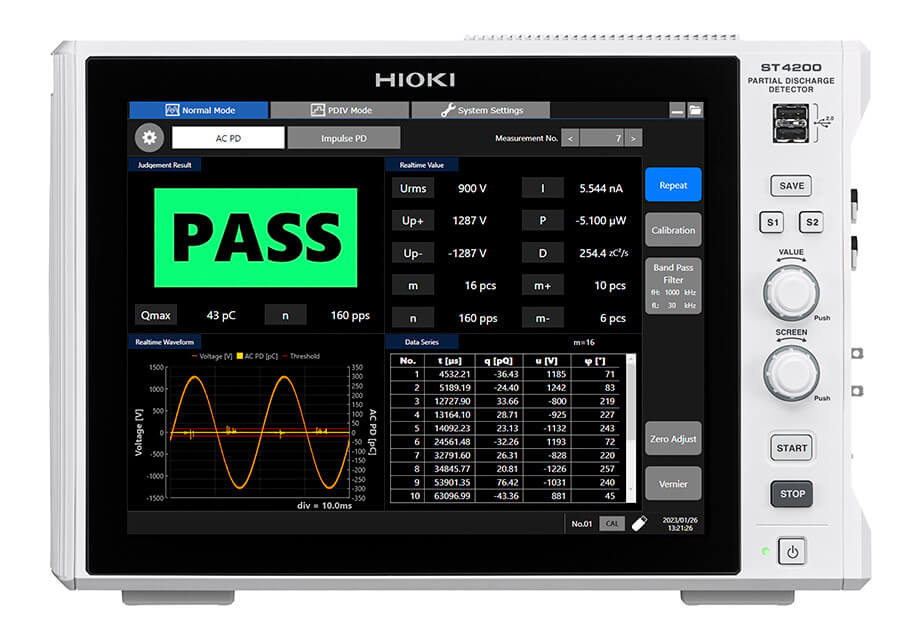
The ST4200 is an independent partial discharge tester that can perform both AC partial discharge (AC PD) testing and surge partial discharge (surge PD) testing. The test voltage is applied from an impulse winding tester (surge tester) or withstand voltage tester (hipot tester), and a CT sensor or a PD sensing circuit senses the current from which the partial discharges are detected. The instrument excels in noise resistance as it utilizes a bandpass filter function and high-frequency CT. It detects partial discharges and measures partial discharge parameters in accordance with IEC standards. Values and waveforms can be observed in real time and measurement data can be saved to internal storage media.
AC PD measurement: IEC 60270 and IEC 60034-27-1
PDIV, PDEV*, and IEC standard-defined parameters
*Only when used with the Automatic Insulation/Withstanding HiTester 3153
Surge PD measurement: IEC 61934, IEC 60034-27-5
Functionality for displaying RPDIV, RPDEV, PDIV, PDEV, and IEC standard-defined parameters
SW2001 High Voltage Multiplexer
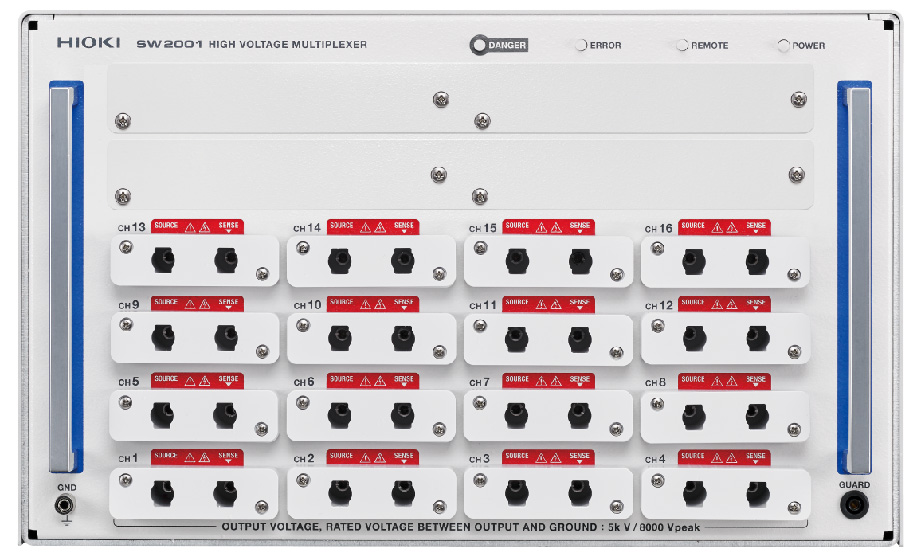
The SW2001 accommodates not only insulation resistance testing, hipot testing, and surge testing, all of which use high voltages, but also winding resistance measurement and inductance measurement, which involve 4-terminal low-voltage measurement. Together with PD testing, the high-voltage multiplexer can integrate six different tests.
Furthermore, its protective discharge function prevents damage to instruments and DUTs by safely switching between high and low voltages.
Selectable number of channels for your test needs
SW2001-04 (4 channels), SW2001-08 (8 channels), SW2001-16 (16 channels)
Input rating
· Hipot tester: 5 kV AC RMS, 5 kV DC, 7.071 kV peak
· Surge tester: 8 kV peak
· Low-voltage 4-terminal input: 30 V AC RMS, 60 V DC, 42.4 V peak
Maximum allowable impulse current
100 A peak
Relay service life
5 million or more cycles (reference value, not guaranteed)
Effect on accuracy
· Effect on insulation resistance measurement accuracy: 2% (1 MΩ to 1 GΩ)
· Magnitude of effect on AC PD measurement: 40 pC or less (during 3 kV application)
Summary
Partial discharge (PD) testing is essential for inverter-driven motors, particularly in electric vehicles (EVs), due to the high voltages they experience during switching operations. Continuous partial discharges can lead to insulation degradation, increasing the risk of serious accidents like fires from short-circuits. While traditional insulation tests can identify insulation defects, PD testing is crucial for detecting latent issues that could compromise motor safety and quality. Effective PD testing methods include AC PD and surge PD testing, each targeting different insulation weaknesses. Combining both methods enhances defect detection. However, implementing PD testing in production lines faces challenges, such as noise interference affecting measurement repeatability, which is often seen in PD testing using the electromagnetic wave detection method. For efficient motor test system design, multiplexers play an important role, but those designs struggle to meet stringent insulation and measurement requirements. Hioki’s Partial Discharge Detector ST4200 and High Voltage Multiplexer SW2001 facilitate effective PD testing by allowing safe switching among multiple test parameters and motors. The ST4200 performs both AC and surge PD testing, adhering to IEC standards, while the SW2001 integrates various high-voltage and low-voltage tests, ensuring reliable and efficient testing processes. For more information about the ST4200 and SW2001, please visit product pages or submit your questions using our online inquiry form.

